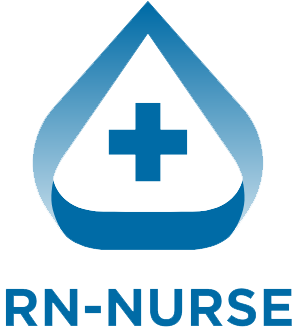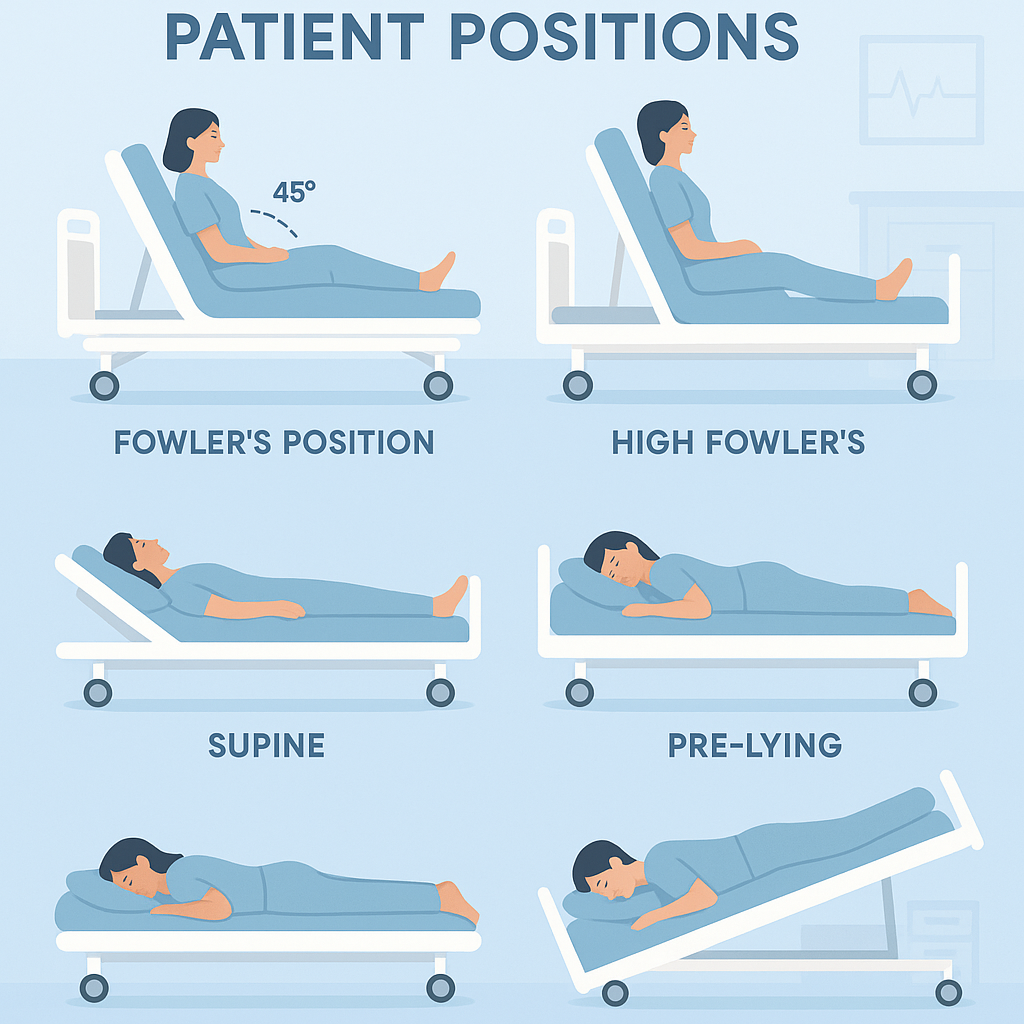For any RN nurse or nursing student preparing for the NCLEX, understanding patient positioning is essential. Proper positioning not only ensures comfort but also plays a critical role in preventing complications, improving oxygenation, and promoting healing. As part of your nursing bundle of skills, knowing when to sit a patient up, lay them flat, or use special positions like Trendelenburg can make the difference between recovery and deterioration.
Why Patient Positioning Matters in Nursing
Positioning is not just about comfort—it’s a nursing intervention that impacts:
- Airway & breathing: Helps prevent aspiration and improves oxygen exchange.
- Circulation: Promotes venous return and prevents complications like DVT.
- Safety & healing: Protects surgical sites and prevents pressure injuries.
For the NCLEX, expect questions where you must quickly identify the correct position for patients in post-op care, respiratory distress, or shock.
Common Nursing Positions and Their Uses
1. High Fowler’s Position (Sitting Up 60–90°)
- Use for: Respiratory distress, post-op craniotomy, heart failure, feeding to prevent aspiration.
- Why: Promotes maximum lung expansion and decreases work of breathing.
- NCLEX tip: If a patient is short of breath, sit them up first.
2. Semi-Fowler’s Position (30–45°)
- Use for: Tube feeding, after surgery, patients with increased intracranial pressure.
- Why: Reduces aspiration risk, supports comfort, and maintains stable circulation.
3. Supine / Flat Position
- Use for: Spinal cord injury, post-lumbar puncture, post-cardiac catheterization.
- Why: Maintains alignment, prevents CSF leakage, stabilizes spinal cord.
- RN nurse priority: Always check for pressure points when flat to avoid skin breakdown.
4. Prone Position (Lying on Stomach)
- Use for: ARDS patients, post-burn grafts, and to improve oxygenation.
- Why: Promotes lung recruitment in severe respiratory failure.
- NCLEX tip: Only use if the airway is secure.
5. Trendelenburg Position (Head Down, Feet Up)
- Use for: Shock (to increase venous return), central line insertion, umbilical cord prolapse.
- Why: Promotes perfusion to vital organs.
- Nursing note: Avoid in head injury or respiratory distress.
6. Reverse Trendelenburg
- Use for: Gastric emptying, GERD patients, and post-esophageal surgery.
- Why: Prevents aspiration and reduces reflux.
7. Side-Lying (Lateral Position)
- Use for: Unconscious patients (airway protection), pregnancy (left lateral best for placental perfusion), and post-seizure recovery.
- Why: Promotes drainage, reduces aspiration risk, increases circulation.
NCLEX Quick Memory Guide
- Respiratory distress → Sit up (High Fowler’s).
- Shock → Trendelenburg.
- Post-lumbar puncture or spinal injury → Flat.
- Unconscious patient → Side-lying.
- Pregnancy (to prevent supine hypotension) → Left lateral.
Final Thoughts
Patient positioning is a fundamental nursing skill that appears often in NCLEX questions and in real clinical practice. As a registered nurse, you’ll use positioning every shift—whether supporting a patient post-surgery, stabilizing during an emergency, or promoting long-term healing. Mastering this quick guide ensures you’re prepared for both the exam and the bedside.

